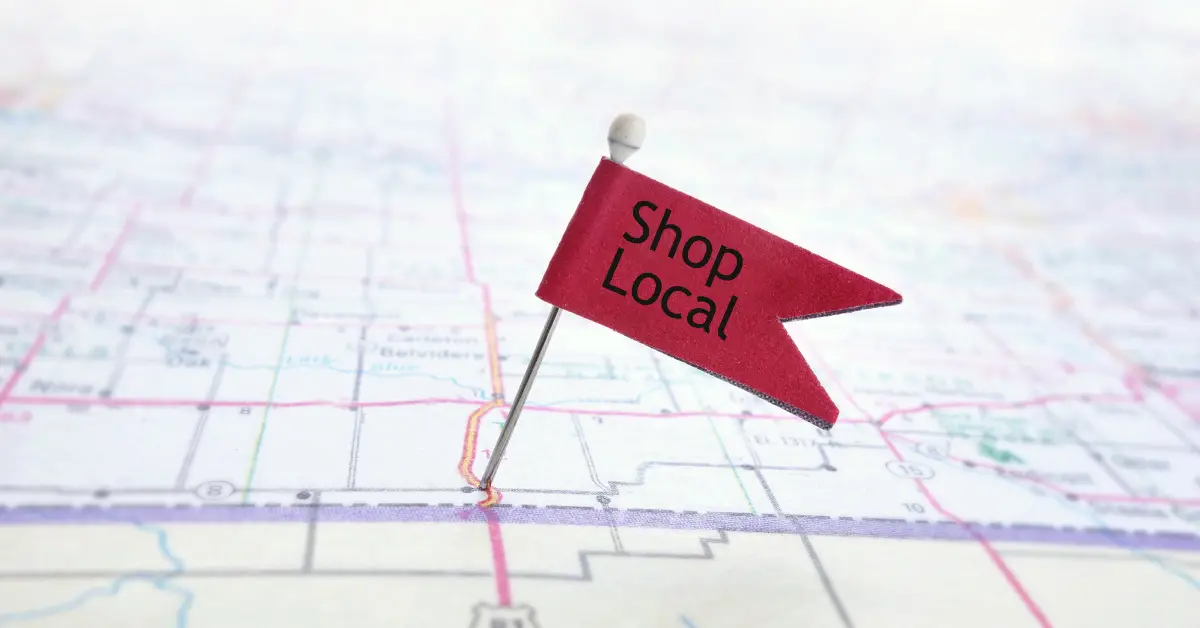In a context where the prospect’s future is written on dotted lines, brands and outlets are leveraging the leverage available through and for local communications. The exercise is comprehensive: it is appropriate to result in nationally dictated communication with more human, authentic, spontaneous codes… (etc, etc.) to meet the objectives agreed at the point of sale.
Because yes, each point of sale, depending on its region, its goal, customer behavior, has different goals. A seasonal store will think differently than a city store or a hypermarket located on the outskirts of a big city.
In this article, we revisit key points to understand the challenges of local communication in mass distribution. The session can be listened to in its entirety as a podcast or video.
Local communication accounts for more than 30% of spending in the retail advertising market
In France as a whole, advertising market today it is a market worth 33 billion euros.
In a sectoral approach, the distribution sector is the leading player with 9 billion euros in 2022 according to France Pub (including spending on communication in the distribution sector including proprietary digital media (sites, apps, content, etc.).
And if we resonate va local accessi.e. the dedicated part local communicationthis represents 10 billion euros: “the local communicationhistorically it is a very large part of communication,” confirms Élisabeth Cony in our webinar dedicated to the challenges of local communication in mass distribution.
Communications spending peaked in 2019
Due to the Covid crisis, the mass distribution sector has fallen back digital solutions at a time when the distribution of prospectuses was no longer permitted.
It was in 2019 that the peak of communications spending by large retailers reached its peak.
The distribution sector uses a very large number of communication levers
Method of communication in mass distribution. Where previously shops focused on 3-4 levers (brochure, radio, local press, 4×3, bus shelters etc.), digital has expanded the field of possibilities: social networks, display, SEO/SEA, email/SMS, levers there is no shortage of ways, how to get in touch with your audience.
So today there are as many levers as there are scenarios to consider. Until 2000+ we were historically on three or four mediums and since then digitization since the early 2000s, we’ve had scripts that easily span eight to ten mediums.
“The mass distribution sector uses a large number of communication levers. We can talk about ten main levers,” adds the founder of Madame Benchmark, “the market is currently very dynamic with the redistribution of permanent cards.”
This variety of levers “shows all the complexity faced by outlets that ultimately didn’t have to make these decisions, that knew the prospect distribution area and that could discuss with their distributors to know where to distribute and spend a limited amount of time,” he explains here Arnaud Longatte of Nanoter, “shops feel the need to be supported to really know, depending on their area, what levers to activate”.
In 2022, we also observe that promotion costs slightly exceed mailbox catalog costs for the first time.
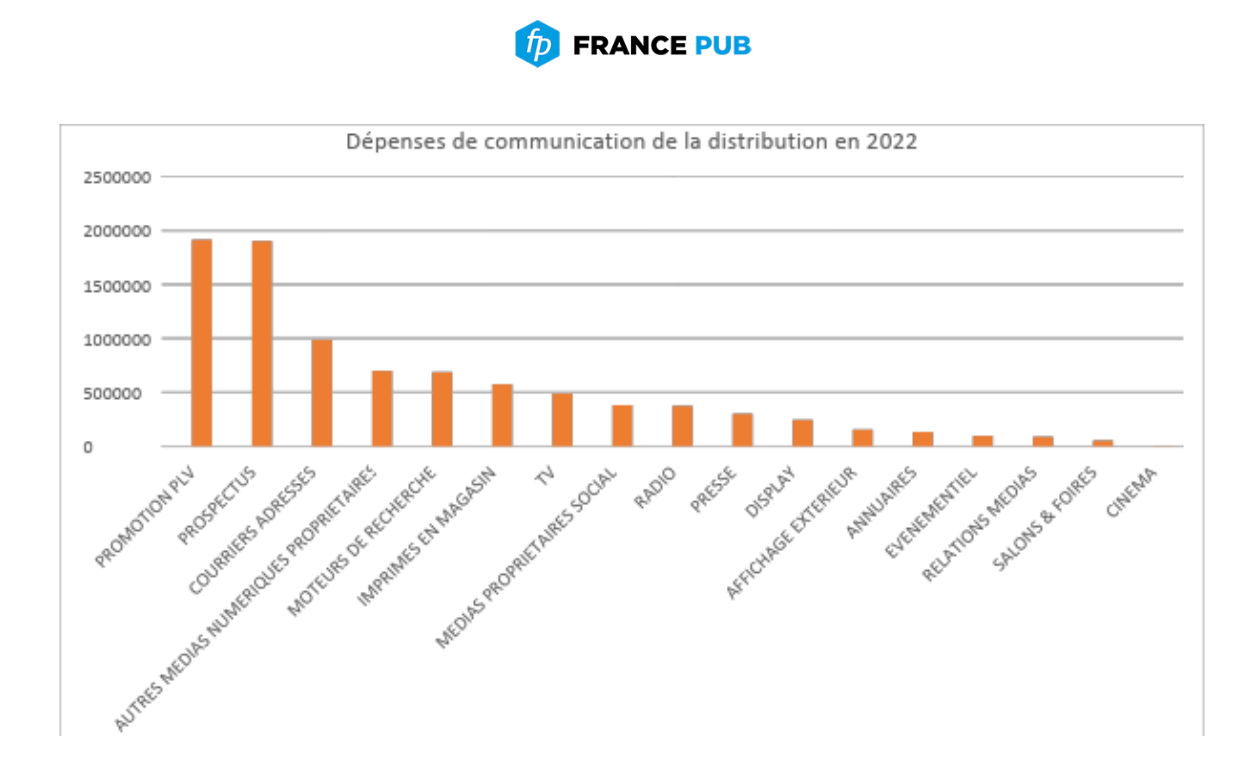
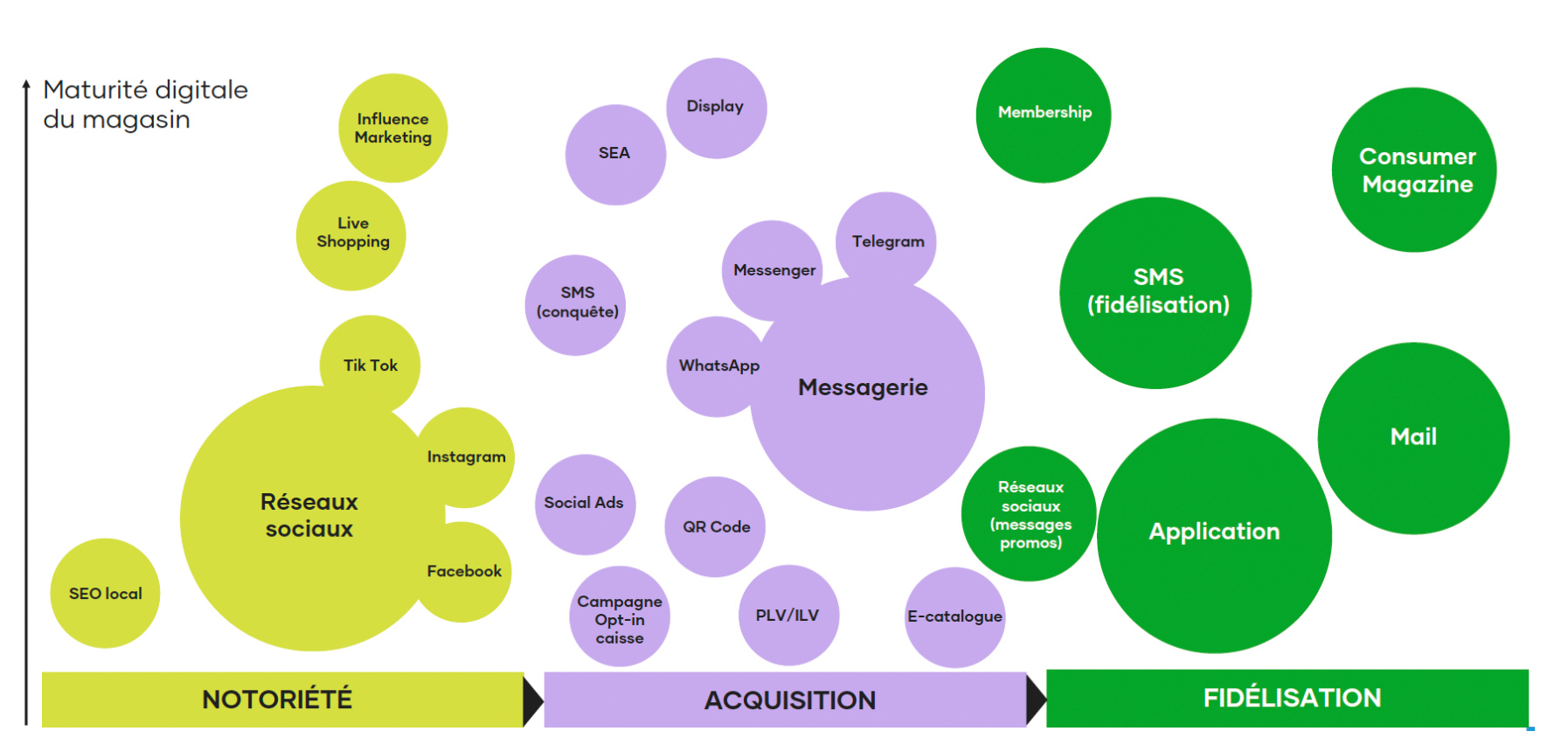
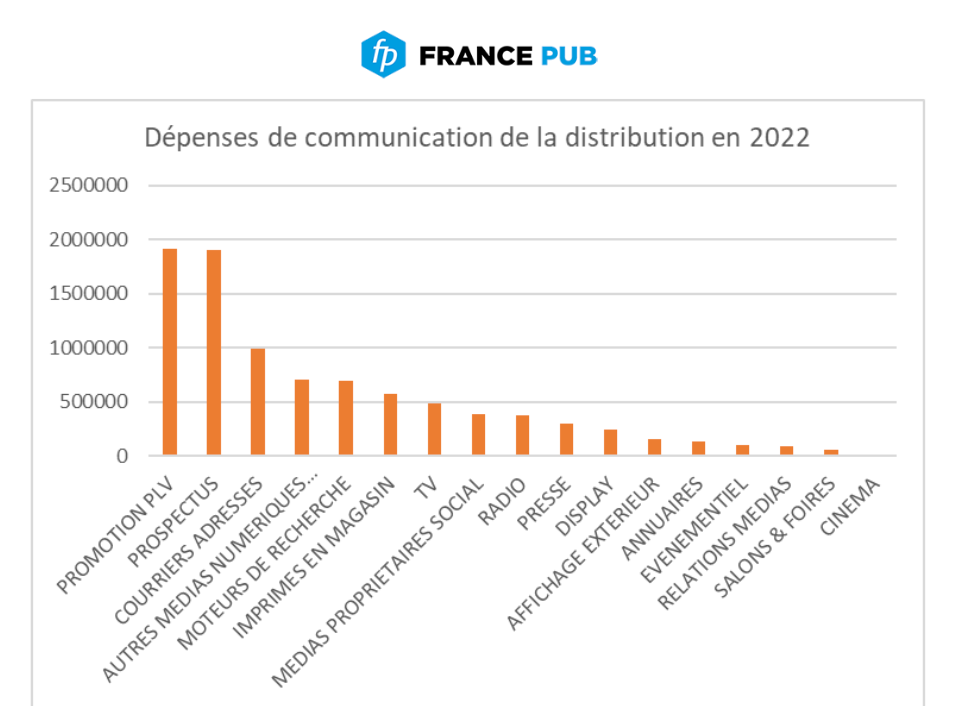
Starting a sale in a store involves several points. The user must see the sign on the radio, on TV, on social networks, on billboards, etc. So it is a set of things. Rafael Lefevre, Meta
📩 OUR NEWS
CSR, Com’ Locale, Podcast…: receive our newsletters every week
In-store printing: an understudied use that is regaining interest
THE prospectus it may no longer be distributed, yet it arouses desire. “The shop front windows are often empty,” notes Élisabeth Cony.
“I’ve done three studies in the Oui Pub zone and it’s clear that the displays are empty. There is still a desire among customers, if they no longer have their flyers in their inbox, to find them in a store, if they didn’t find them immediately in digital form.”
This is also the same observation made by Pierre Godineau, partner of Super U Vertou, who explained to us that paper is still very popular in stores.
Life without a prospectus: the Super U de Vertou experience with Pierre Godineau, co-partner of the business
A podcast with Pierre Godineau, a young associate of Système U, with whom we discuss the termination of the prospectus within the business.
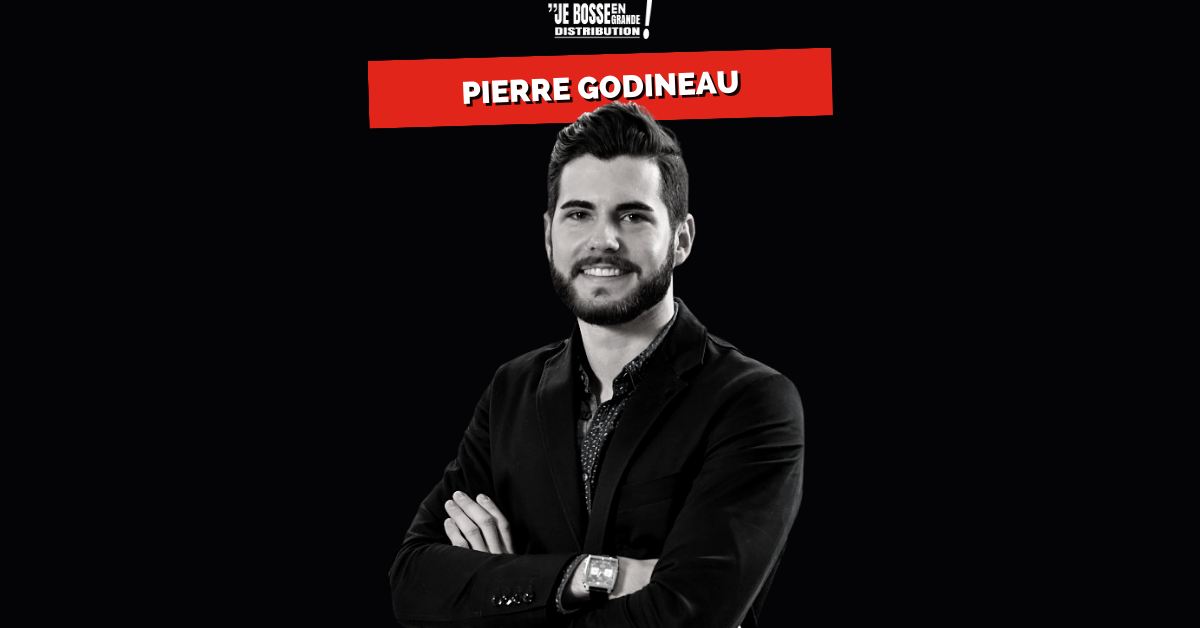
The development of communication expenses since 2018 favors digital
The same budget, but a variety of levers, this explains why the postponement is gradual new media. If traditional promotional media (flyers, address letters) and traditional media (television, radio, print, billboards, cinema) will decline by -17% and -3% in 2022, digital promotional media will not. Proprietary digital media, search, social media, display is experiencing crazy growth in brand strategies. According to France Pub, this increase is around +81%.
“You can really see it in the numbers. Reducing investment in catalogs and mailboxes benefits digital, but also other more historical media such as PMVs, radio, digital displays and signs. Brands first prioritize the support they control such as app, website, wallet, etc. Then they buy digital advertising to broadcast promotions. This set can work on a wide range of support at the local level,” confirms Elisabeth Cony.
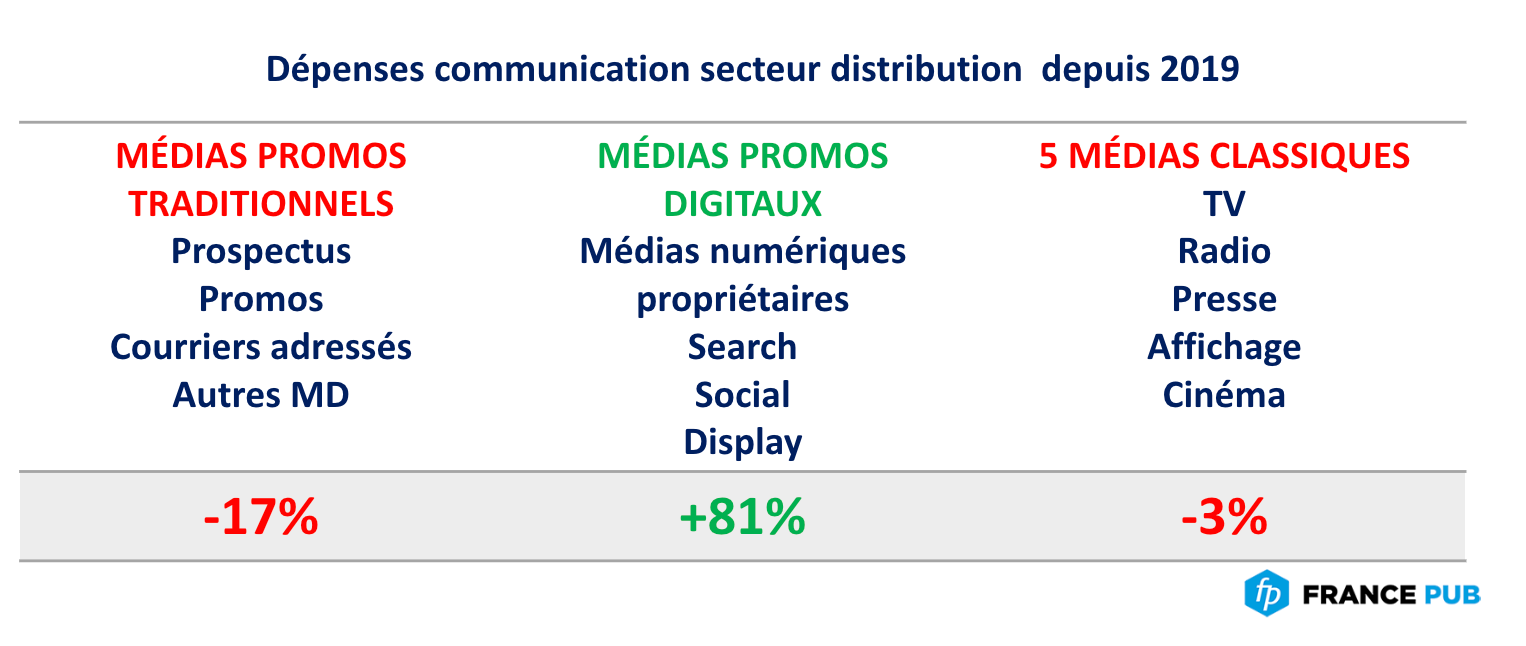
Measuring in-store traffic using digital technology is a ‘fantasy’
To clarify our prejudices, the effects of local communication at the point of sale are difficult to measure : “it’s a fantasy”, says Rafaël Lefevre, client partner at Meta, “when we talk about digital, we mechanically talk about ROI on a national scale. Of course we can measure incredible things, incremental ROI, but at store scale, it’s much more complex,” he admits.
As already mentioned, one of the undervalued practices in digital is the measurement of impressions, i.e. the number of times Internet users see an ad: “We have to restore the display print image. Because in reality, just seeing an ad has an impact on consumers. For a business, it is a very good start to have an idea of the number of people we will reach and the number of people who can click on the ad,” says Rafaël Lefevre.
9 out of 10 stores consider social networks to be a serious solution for local communication.
90% of sales outlets consider Facebook, Instagram, TikTok and WhatsApp to be serious solutions for local communication. This number also comes from a study done together with the Nanotera agency in a white paper Yes Pub: 9 months later.
THE social networks today are tools for conveying brand values, presenting employees, demonstrating know-how, promoting environmental events, etc.: “Businesses use social networks to make employees visible. On the other hand, Facebook, Instagram in its organic dimension are not the preferred channel for broadcasting promotion. We have to separate them,” says Arnaud Longatte here.
This figure of 90% is not surprising in itself: practical, accessible, they are tools that allow sales points to be autonomous without having to systematically report to the national: “We know that social networks are used by all French people. The various surveys that have been carried out, whether among consumers or among those who decide on marketing, in distribution, confirm this figure,” explains Rafaël Lefevre in particular.
It has come a long way since then. Brands that were previously afraid of points of sale have abandoned the topic:
“There has long been a historical fear of this topic. In the headquarters, we say on the spot, they don’t know anything about it, they are going to make exotic creations for us, etc.”, smiles Elisabeth Cony, “after all, the progress of the tools makes it possible to reconcile the two. Business professionals have this creativity and precision to talk about local structure, activities and local initiatives. It’s really a benefit,” assures the specialist. To professionalize this communication, it is of course important to respect the codes of your brand.
Facebook advertising works better than organic
After organically conquering social networks, the next step social networks will put more resources into paid. Two communication tools.
“I think most businesses still keep in mind that social media is organic. I have fans, I want more fans. Why do I want more fans? Because I want to expose my messages to as many people as possible. If I expose as many people to it as possible, I have the maximum chance of people coming to the store. In fact, there are probably 10 to 20 times more people using Facebook and Instagram every day than are around your store. So there is a huge gap between the two and today we can see social media from two different perspectives. Organic angle. I have people who are fans, who are probably already my customers and who already shop every week. So the added business value of these people is more human and shows them the life of the business. But I also have a lot of people around my store who aren’t necessarily customers, or who maybe don’t come in as often, and who I can still reach through advertising. So Facebook as a medium.”
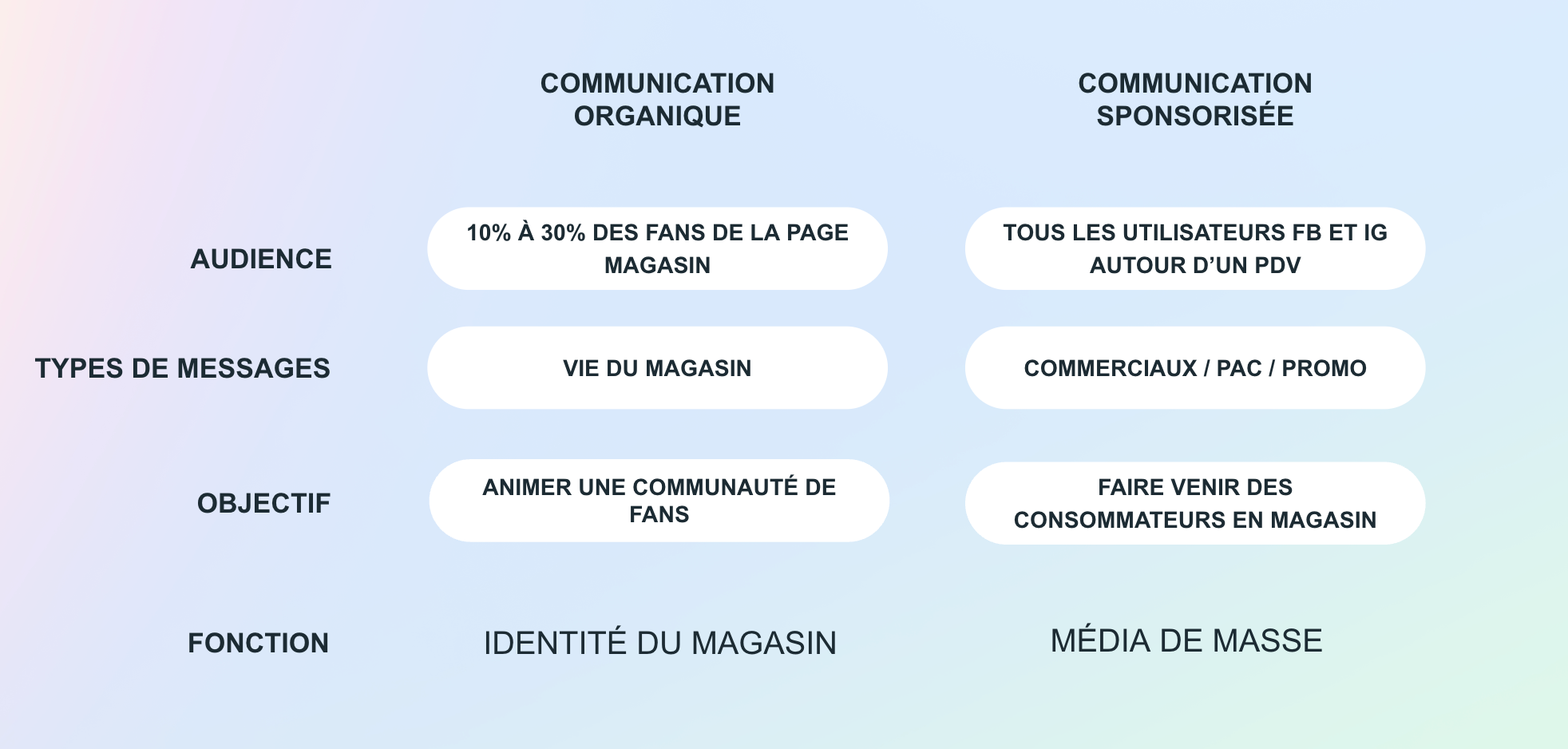
These two forms of communication are significantly different. When it comes to results, the numbers speak for themselves. Depending on how and how the budget is used, the number affected can be multiplied by 20.
Therefore, outlets are keen to understand how social media advertising works and invest time and money into it.
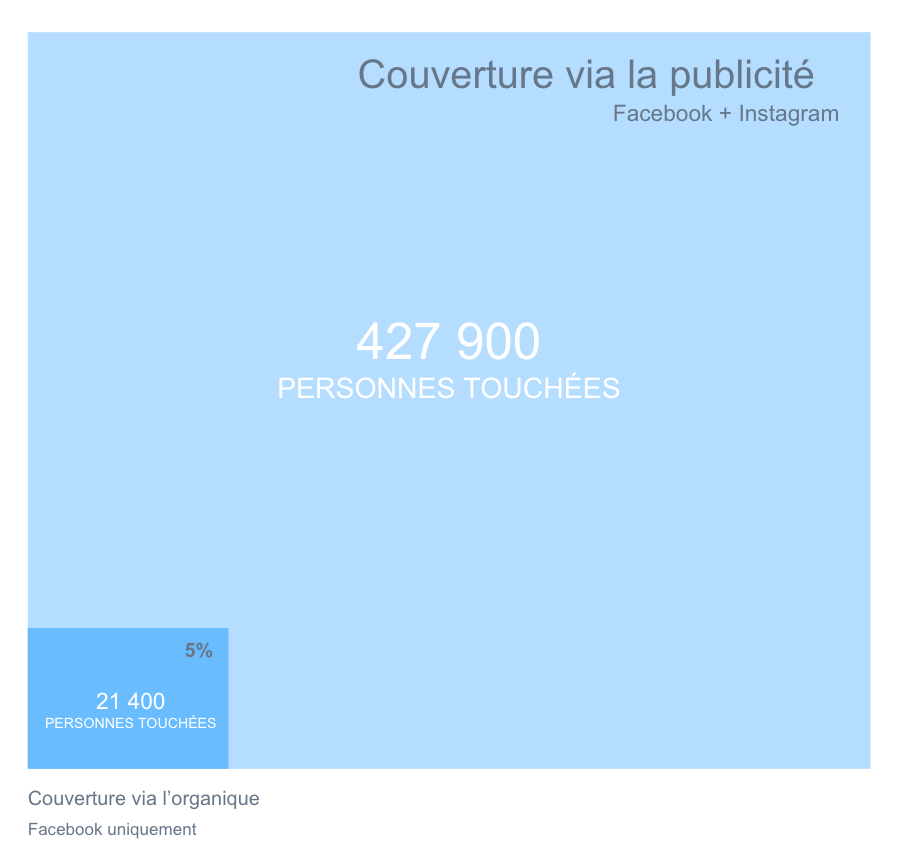
“Facebook is a strong local media business. When some stores take years to build up 20 or 30,000 fans, a Facebook ad campaign allows them to reach several tens of thousands of people near their store in a matter of days.”; MAthieu Lepoutre, Media Manager 360 Auchan
The profession of community manager in mass distribution, a role that naturally evolves towards media activation
This vision is also profoundly changing the profession community manager in mass distribution. Rather than devoting your time to organic and content creation, the challenge of tomorrow will be to allocate your time to advertising, including creating advertising, setting up a media plan, managing, monitoring and measuring campaigns.
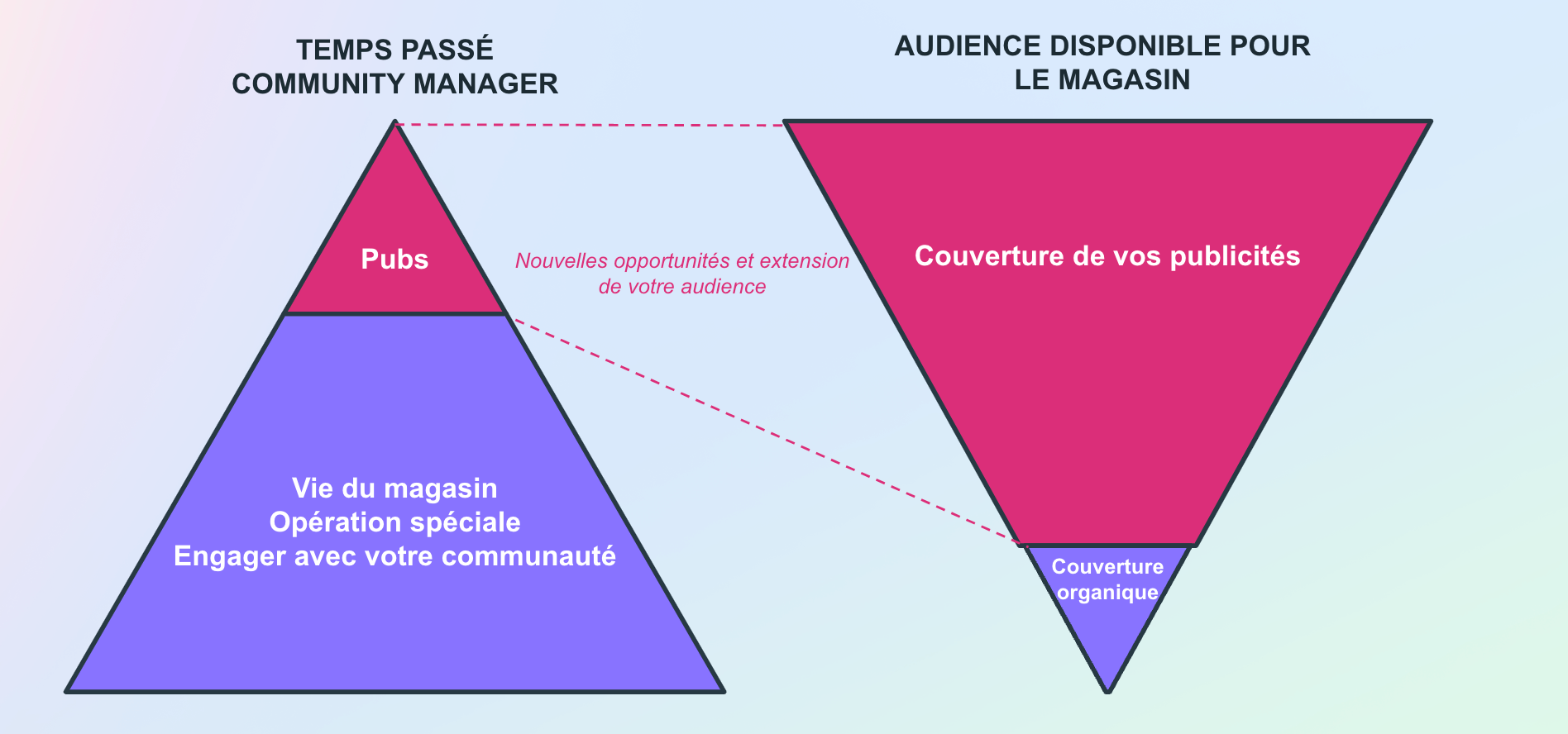
Profiles, missions and job expectations of a communications manager in mass distribution
Also called a communications manager, a community manager, a veritable Swiss army knife of the point of sale, he manages the communications strategy.

–> You can find the webinar here: local communication challenges for mass distribution

